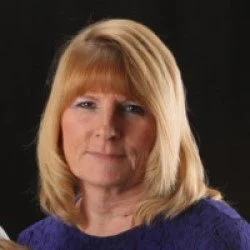Written by: Internal Analysis & Opinion Writers
Jim Nabors, president of the National Association of Mortgage Brokers (NAMB), has publicly endorsed the VA Home Loan Program Reform Act, a new piece of legislation designed to help veterans manage mortgage delinquencies and avoid foreclosure. The bill is intended to serve as a replacement for the recently discontinued Veterans Affairs Servicing Purchase (VASP) Program, which provided essential relief for struggling veteran homeowners.
The VASP Program, introduced in May 2024, enabled the Department of Veterans Affairs to purchase delinquent VA loans and modify their terms to help borrowers remain in their homes. The program was widely seen as a lifeline for veterans experiencing financial distress. However, the VA abruptly ended the program on April 30, 2025, leaving tens of thousands of borrowers without a critical path to resolution.
In response, the VA Home Loan Program Reform Act—spearheaded by Rep. Derrick Van Orden of Wisconsin—proposes a more permanent and flexible alternative. A key feature of the bill is the introduction of a "partial claim" mechanism, which allows the delinquent portion of a mortgage to be moved to the end of the loan term. That amount would be interest-free, while the remainder of the loan would continue with its current interest rate and monthly payment terms.
Nabors has called this approach a fair and effective strategy that protects both the interests of veteran borrowers and the fiscal responsibility of government-backed programs. In a letter sent on May 8 to Rep. Mike Bost, chair of the House Committee on Veterans’ Affairs, Nabors emphasized the urgency of enacting the legislation. He cited data showing that, as of April 1, more than 75,000 VA borrowers were at least three payments behind on their mortgages—a troubling statistic that signals rising risk of foreclosure among those who have served.
The Mortgage Bankers Association (MBA) has also voiced strong support for the bill. In a recent letter to congressional leaders, the MBA stressed the importance of creating a sustainable loss mitigation tool for VA loans. The organization highlighted the need for a reliable structure to help borrowers recover from temporary economic setbacks such as job loss, illness, or transitions following active duty.
Nabors highlighted that the proposed legislation enjoys bipartisan backing and addresses a clear gap in the current housing assistance framework for veterans. He argued that the federal government has a moral and civic responsibility to support those who served in the armed forces and are now at risk of losing their homes due to temporary financial hardship.
The proposed reform also seeks to prevent further disruption in the VA mortgage servicing industry. The sudden end of the VASP Program had created confusion among lenders and servicers, many of whom were left without clear guidance on how to manage loans that were previously eligible for modification or forbearance. The new bill would provide a consistent path forward, with clear standards and protections for all parties involved.
Supporters of the bill contend that the partial claim solution is a proven strategy already used effectively in FHA-insured loan programs. By applying a similar model to VA loans, lawmakers hope to replicate that success while tailoring the approach to the unique needs of veteran borrowers.
Housing advocates also note that without legislative intervention, a growing number of veterans could face housing insecurity, which has long-term ripple effects on employment, health, and community stability. The Reform Act, if passed, could help stabilize thousands of households and prevent unnecessary foreclosures in the months ahead.
As Congress prepares to review the bill in upcoming sessions, housing professionals and veteran advocacy groups are urging swift passage. With interest rates still elevated and economic uncertainty lingering, the need for structured mortgage relief options has become even more pressing.
The future of the VA Home Loan Program Reform Act remains in the hands of lawmakers, but the broad coalition of support from industry leaders and advocacy organizations underscores its potential to make a meaningful difference. For now, those backing the bill remain hopeful that a more permanent solution will soon replace the short-lived VASP Program and offer lasting support to those who have served the nation.












































